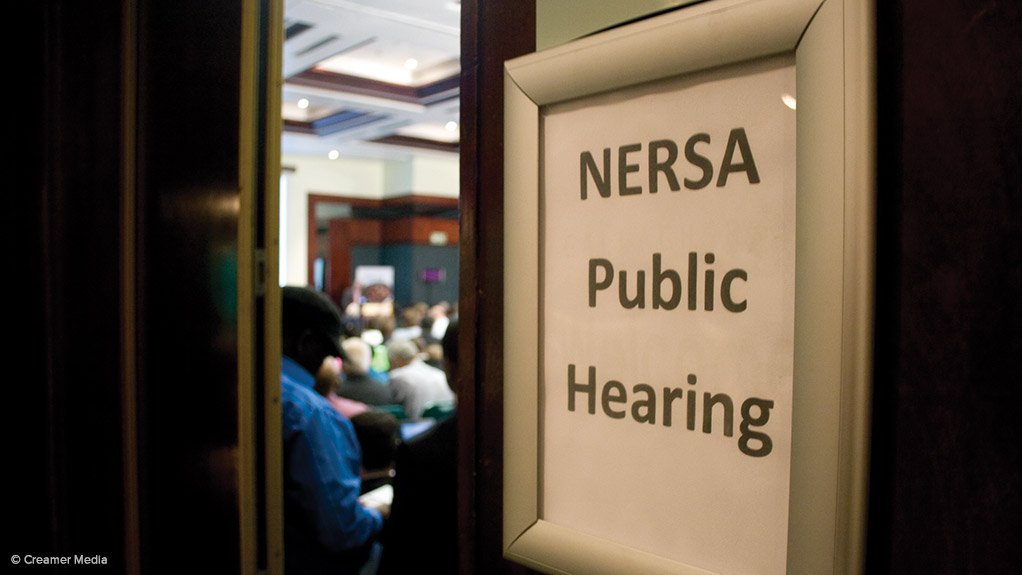Publication of Eskom’s 36% tariff submission by Nersa heralds formal start of consultation showdown
The National Energy Regulator of South Africa (Nersa) has formally published Eskom’s much-anticipated and much-criticised allowable revenue application for the coming three years ahead of what is likely to be a vigorous and potentially hostile public consultation phase.
The documents have been published on the Nersa website following an assessment of its compliance with the methodology and approval to do so during a special Electricity Subcommittee meeting held on September 23.
As has been widely reported, the sixth multiyear price determination (MYPD6) confirms that Eskom has indeed applied for allowable revenue of R446-billion for the 2025/26 financial year.
If granted, this would translate to a tariff increase for direct Eskom customers of 36.15% on April 1 next year, and a 43.55% hike in municipal tariffs from July 1.
The three-year application also includes total revenue requests of R495-billion and R537-billion for the 2026/27 and 2027/28 financial years, with associated hikes of 11.81% and 9.1% for the two outer years should the 36.15% increase have been approved in the first year.
The application includes Regulatory Clearing Account (RCA) determinations to allow Eskom to claw back revenue foregone in previous tariff periods and court outcomes, including a ruling allowing Eskom to recover residual amounts arising from the illegal removal of R69-billion from its asset base during the MYPD4 horizon.
RINGFENCED SUBMISSIONS
The MYPD6 application is accompanied by separate submission documents showing the specific allowable revenue requests of Eskom Generation, Eskom Distribution and the National Transmission Company of South Africa (NTCSA), which began operating as a wholly-owned Eskom Holdings subsidiary with its own board, on July 1.
Ahead of the submission, NTCSA CEO Segomoco Scheppers stressed the importance of the unit receiving ringfenced revenue that could not be reallocated across other Eskom divisions, as had been the case previously, undermining investment in much-needed grid infrastructure.
The NTCSA has applied for allowable revenue of R101-billion, R115-billion and R155-billion for the three financial years covered by the MYPD6.
Eskom Generation is applying for R292-billion, R324-billion and R322-billion over the horizon, which includes revenue to continue operating and maintaining units at Camden, Hendrina, Grootvlei, Arnot and Kriel that would have had units shutting down during this period, but where permission has been granted to allow for ongoing operations until 2030.
Eskom Distribution, which is expected to begin operating as a separate subsidiary in the coming year, has applied for allowable revenue of R53-billion, R56-billion and R59-billion for the period covered by the MYPD6.
The submission also highlights the ongoing need for tariff restructuring, following Nersa’s refusal to approve restructuring requests in 2020 and 2022, but states that restructuring proposals would be made in a separate application to the regulator.
Eskom argues that restructuring is required to align tariff rates with divisional costs, reflect the evolving energy industry, and ensure revenue recovery.
“The current tariff rates no longer accurately reflect the different services provided by Eskom.
“Furthermore, the evolving nature of the energy industry necessitates the modernisation of tariff structures,” the submission adds, highlighting the prevalence of customer-owned generation and the evolving patterns of grid usage.
The revenue build-up for 2025/26 outlined in the submission includes: R128-billion for primary energy costs, including R93.6-billion for coal; R93-billion for operating expenses, including R37-billion for employee benefits; R8.9-billion to cover arrear debt; R66.6-billion for purchases from independent power producers; R10-billion for international purchases; R66.9-billion for depreciation; R42.6-billion for a return on assets; R6.5-billion to cover the environmental levy; R5.5-billion for the carbon tax; and R16.7-billion for RCA recoveries.
FALLING SALES
The application assumes declining sales over the period, falling from 185 652 GWh in 2025/26 (a decline from projected sales of 189 072 GWh in 2024/25), to 183 254 GWh and 182 668 GWh in the outer years.
“Eskom sales are expected to be negatively affected by the gradual transition to alternative energy sources as customers seek to have more stable and cleaner sources of energy,” the application states.
Eskom also seeks to make assurances that it is addressing crime, fraud and corruption, outstanding municipal debt of R74-billion, and its primary energy, operating and employee costs; matters that are all likely to be raised by opponents to the proposed hikes during the upcoming public hearings.
INTENSE OPPOSITION
The opposition is likely to be intense, with the Democratic Alliance having already launched a petition opposing the hikes and with Electricity and Energy Minister Dr Kgosientsho Ramokgopa describing the increases as “untenable”.
In a speech during a special Parliamentary debate on the Eskom hikes, Ramokgopa reaffirmed the need to transition the Eskom tariff toward cost-reflectivity, highlighting the burden on taxpayers should the utility’s finances not be stabilised.
However, he also described the proposed hike as unaffordable and promised to work on an outcome that struck a better balance between the needs of consumers and Eskom’s financial sustainability.
“I’m talking about that delicate balance of ensuring the sustainability of Eskom that is needed for us to allow the economy to grow, [while cushioning] the poor and the middle-income earners in this country, so that we don't erode their disposable income.”
In its submission, Eskom argues the case for a full migration to cost-reflective tariffs, stating that, while it is tempting to limit tariff increases and cover the revenue shortfall with government or Eskom borrowings, such a move will be “ill-advised”.
“Tariff increases should at least be sufficient to transition Eskom towards a more cost-reflective electricity tariff (prudently and efficiently incurred) over the next few years.
“The protection of vulnerable sectors, including poor households and certain industrial sectors are being addressed by government-led interventions.”
Nersa set a closing date for the submission of written comments of 16:00 on November 1, followed by physical public hearings, to be held across all nine provinces between November 18 and December 4.
The first hearings are scheduled for the Western Cape on November 18 and 19 and the final hearings will be held in Gauteng on December 3 and 4.
Nersa indicated in a statement that Energy Regulator, its highest decision-making structure, would make a final decision on December 20.
Article Enquiry
Email Article
Save Article
Feedback
To advertise email advertising@creamermedia.co.za or click here
Press Office
Announcements
What's On
Subscribe to improve your user experience...
Option 1 (equivalent of R125 a month):
Receive a weekly copy of Creamer Media's Engineering News & Mining Weekly magazine
(print copy for those in South Africa and e-magazine for those outside of South Africa)
Receive daily email newsletters
Access to full search results
Access archive of magazine back copies
Access to Projects in Progress
Access to ONE Research Report of your choice in PDF format
Option 2 (equivalent of R375 a month):
All benefits from Option 1
PLUS
Access to Creamer Media's Research Channel Africa for ALL Research Reports, in PDF format, on various industrial and mining sectors
including Electricity; Water; Energy Transition; Hydrogen; Roads, Rail and Ports; Coal; Gold; Platinum; Battery Metals; etc.
Already a subscriber?
Forgotten your password?
Receive weekly copy of Creamer Media's Engineering News & Mining Weekly magazine (print copy for those in South Africa and e-magazine for those outside of South Africa)
➕
Recieve daily email newsletters
➕
Access to full search results
➕
Access archive of magazine back copies
➕
Access to Projects in Progress
➕
Access to ONE Research Report of your choice in PDF format
RESEARCH CHANNEL AFRICA
R4500 (equivalent of R375 a month)
SUBSCRIBEAll benefits from Option 1
➕
Access to Creamer Media's Research Channel Africa for ALL Research Reports on various industrial and mining sectors, in PDF format, including on:
Electricity
➕
Water
➕
Energy Transition
➕
Hydrogen
➕
Roads, Rail and Ports
➕
Coal
➕
Gold
➕
Platinum
➕
Battery Metals
➕
etc.
Receive all benefits from Option 1 or Option 2 delivered to numerous people at your company
➕
Multiple User names and Passwords for simultaneous log-ins
➕
Intranet integration access to all in your organisation



















